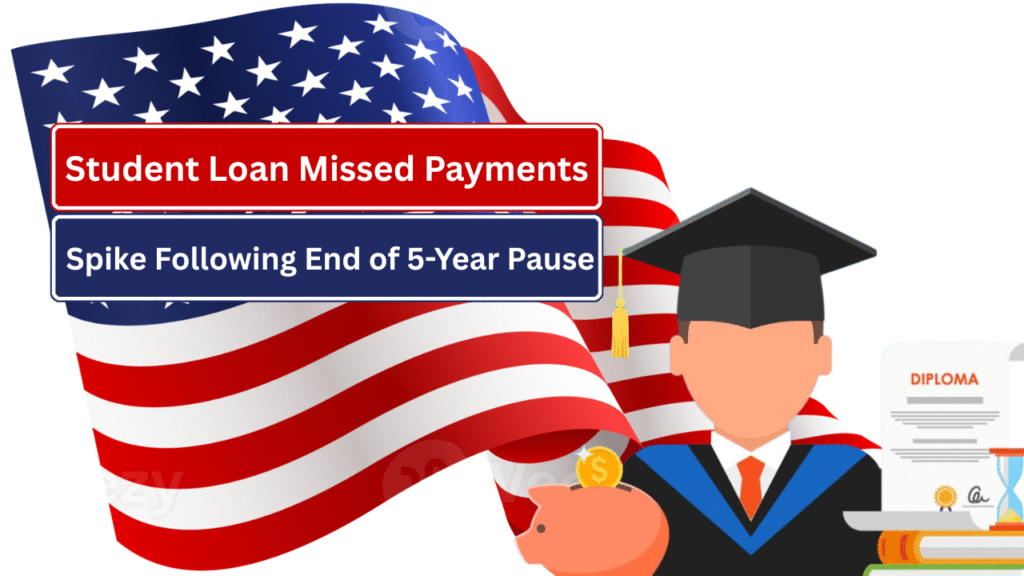After a five-year hiatus, student loan delinquencies in the United States have surged, raising concerns among borrowers, policymakers, and financial institutions. The end of pandemic-era relief programs has led to a significant increase in missed payments, with approximately 8% of student debt-amounting to over $1.6 trillion-now at least 90 days delinquent, according to the Federal Reserve Bank of New York (Axios).
A Return to Pre-Pandemic Challenges
The resumption of student loan payments has proven difficult for many Americans. Data from the Consumer Financial Protection Bureau (CFPB) shows that nearly 30% of borrowers missed their payments in April 2024, mirroring pre-pandemic figures. The CFPB further reports that borrowers in low-income regions are disproportionately affected, experiencing higher rates of delinquency not only on student loans but also on credit cards and auto loans (PaymentsJournal, CFPB).
Resumption of Aggressive Collection Practices
With the pause on collections now lifted, the U.S. Department of Education and the Treasury Department have resumed aggressive recovery tactics. These include wage garnishments, seizure of federal tax refunds, and the reduction of Social Security benefits for borrowers in default.
One of the most controversial changes is the adjustment to protected Social Security income. Previously, $1,883 per month was shielded from collection. That threshold has now been reduced to just $750, potentially pushing many older Americans into financial instability (Axios, Financial Times, MarketWatch).
Economic Implications
The spike in delinquencies could have broader economic consequences. Consumer spending, which contributes roughly 70% to U.S. GDP, may decline as indebted individuals allocate a greater portion of their income toward loan repayment. Economists warn that this shift could stifle economic activity, particularly in states where default rates are higher (Financial Times).
Analysts also highlight the potential strain on financial institutions. As more loans go into delinquency, lenders may need to tighten credit conditions, impacting access to borrowing for other consumer segments.
Policy Debates and Political Fallout
The Biden administration’s decision to resume full-scale collection efforts has sparked renewed debate in Washington. Critics argue that the move undermines support for low- and middle-income families already struggling with inflation and economic uncertainty.
Senator Elizabeth Warren recently challenged Education Secretary Linda McMahon to justify these policies. Warren contends that the Department of Education is failing to protect vulnerable borrowers and is making higher education less attainable for future generations (MarketWatch, Business Insider).
The debate has reinvigorated calls for broader student loan reform, including renewed discussions on debt forgiveness programs, income-driven repayment plans, and adjustments to bankruptcy laws affecting student loan dischargeability.
Resources for Borrowers
Borrowers seeking guidance or support have several resources at their disposal:
- Federal Student Aid: Offers information on repayment plans, deferment, forbearance, and income-driven repayment programs.
- Consumer Financial Protection Bureau: Provides tools and complaint assistance for borrowers facing predatory collection practices or financial hardship.
- National Consumer Law Center: Specializes in advocating for consumer rights and provides educational material and legal assistance related to student loans.
As the landscape continues to evolve, borrowers are advised to stay informed about policy updates and to proactively explore repayment options that best suit their financial situation.
Conclusion
The return of student loan delinquencies marks a significant shift in the post-pandemic financial recovery of millions of Americans. With aggressive collection efforts now underway and delinquencies climbing rapidly, the issue has reignited urgent discussions around the affordability of education, economic inequality, and the role of government in supporting borrowers.
Policymakers, advocates, and financial institutions will need to navigate this renewed crisis carefully-balancing fiscal responsibility with compassion for those facing long-term financial hardship.




